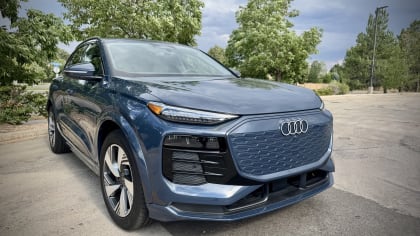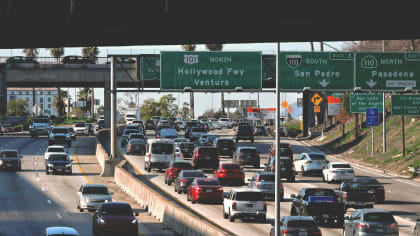THE NEXT GENERATION OF FUEL ECONOMY LABELS
This article is from our archives and has not been updated and integrated with our "new" site yet... Even so, it's still awesome - so keep reading!
Published on Wed, May 25, 2011
By: The LACar Editorial Staff

It’s been almost exactly 53 years since A.S. “Mike” Monroney’s Automobile Information Disclosure Act was enacted. The Monroney sticker (often mispronounced as the Maroney sticker) graces the window of every vehicle sold in this country as a result. Just over 30 years ago, the EPA added fuel economy figures to the sticker. Today, the EPA and DOT unveiled the first major makeover of the new car window sticker, adding cost savings, comparison data and pollution information to accompany the traditional fuel economy numbers. EPA, DOT Unveil the Next Generation of Fuel Economy Labels WASHINGTON – The U.S. Department of Transportation and the U.S. Environmental Protection Agency unveiled new fuel economy labels that they hope will help consumers take advantage of increased efficiency standards and save families money at the pump starting this year. The new labels, which are the most dramatic overhaul to fuel economy labels since the program began more than 30 years ago, will provide more comprehensive fuel efficiency information, including estimated annual fuel costs, savings, as well as information on each vehicle’s environmental impact. The new labels are the result of the bipartisan passenger car and truck fuel economy rule adopted by the EPA and DOT in 2010. “These improvements will give consumers better, more complete information to consider when purchasing new vehicles that are covered by the increased fuel economy standards,” says EPA Administrator Lisa P. Jackson. “Starting with model year 2013, the improved fuel economy labels will be required to be affixed to all new passenger cars and trucks – both conventional gasoline powered and “next generation” cars, such as plug-in hybrids and electric vehicles.” The 2010 fuel economy rule, developed with input from major automakers, environmental groups, and the states, is designed to increase the energy efficiency of cars and trucks built in model years 2012 through 2016, saving 1.8 billion barrels of oil over the life of the program and the average consumer $3,000 in fuel costs. Consumers will see the new labels in showrooms early next year, when 2013 models begin arriving. Automakers may also voluntarily adopt the new labels earlier for model year 2012 vehicles. “The EPA and DOT are creating a new generation of fuel economy labels to meet the needs of a new generation of innovative cars,” said the EPA’s Jackson. “Today’s car buyers want the best possible information about which cars on the lot offer the greatest fuel economy and the best environmental performance. The new labels provide comprehensive information to American car buyers, helping them make a choice that will save money at the gas pump and prevent pollution in the air we breathe.” “Our new fuel economy and environmental labels are a win for automobile consumers and for the nation’s energy independence,” said U.S. Transportation Secretary Ray LaHood. “These labels will provide consumers with up front information about a vehicle’s fuel costs and savings so that they can make informed decisions when purchasing a new car.” The new labels will provide: • New ways to compare energy use and cost between new-technology cars that use electricity and conventional cars that are gasoline-powered. • Estimates on how much consumers will save or spend on fuel over the next five years compared to the average new vehicle. • Ratings of how a model compares to all others for smog emissions and emissions of pollution that contribute to climate change. • An estimate of how much fuel or electricity it takes to drive 100 miles. • Information on the driving range and charging time of an electric vehicle. • A QR Code® (Denso Wave Inc. registered trademark) that will allow users of smartphones to access online information about how various models compare on fuel economy and other environmental and energy factors. This tool will also allow consumers to enter information about their typical commutes and driving behavior in order to get a more precise estimate of fuel costs and savings. Consumers can get more information on the new label at: fueleconomy.gov/label




